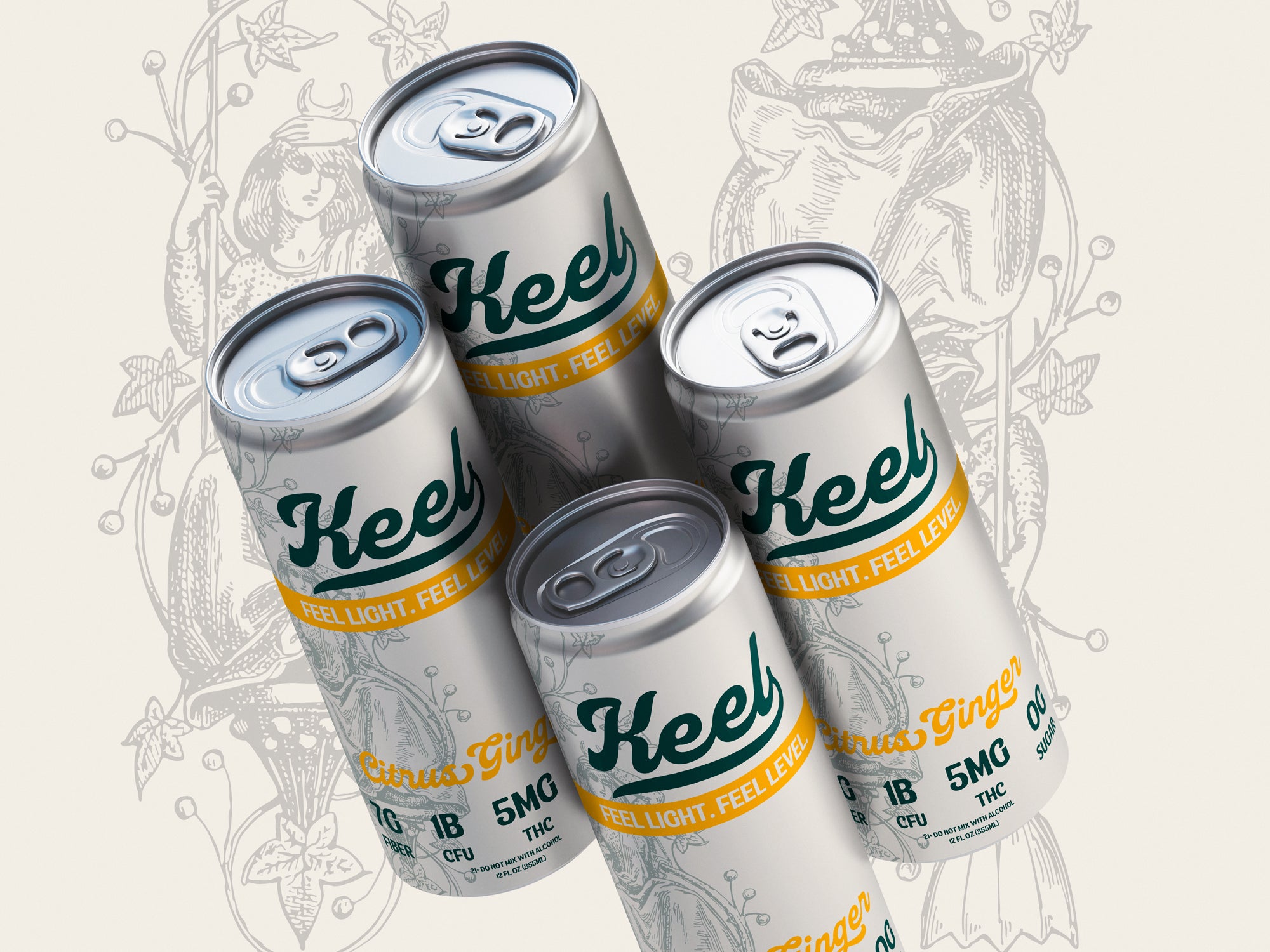TL;DR
Still (non-carbonated) drinks are gentler on your stomach, preserve probiotic viability, and work better with high-fiber formulas than sparkling beverages. Carbonation adds gas to your digestive system, which can cause bloating—especially on an empty stomach or when combined with prebiotic fiber. Still drinks integrate seamlessly into morning routines, don't interfere with probiotic stability, and provide a smooth mouthfeel even with 7+ grams of fiber. Sparkling works well for evening social settings, but still wins for daily gut health rituals.
Still drinks (non-carbonated beverages) are better suited for morning gut health routines and high-fiber, probiotic-rich formulas because they avoid adding gas to your digestive system, preserve probiotic viability, and provide a smooth mouthfeel even with 7+ grams of prebiotic fiber. Carbonation introduces carbon dioxide into your stomach, which can cause bloating, burping, and discomfort—especially when consumed on an empty stomach or combined with fiber that already produces gas during fermentation. Still drinks integrate seamlessly into morning rituals (before breakfast, with coffee) without digestive disruption. Sparkling drinks work well for evening social settings or as soda replacements, but for daily gut health, consistency, and comfort, still format wins.
Still vs Sparkling: Quick Comparison
| Factor | Still (Non-Carbonated) | Sparkling (Carbonated) |
|---|---|---|
| Stomach comfort | Gentle—no added gas, easy on empty stomach | Can cause bloating, burping, especially morning or with fiber |
| Morning routine fit | Perfect—smooth, hydrating, no fizz disruption | Less ideal—carbonation can feel heavy before breakfast |
| Fiber mouthfeel | Smooth—no fizz to compete with fiber texture | Mixed—fizz can mask or clash with fiber, feeling heavier |
| Probiotic stability | Better—no CO₂ to stress live bacteria | Lower—carbonation pressure can reduce CFU over time |
| Hydration feel | Hydrating—absorbs quickly, no gas distension | Less hydrating feel—carbonation creates fullness/gas |
| Best timing | Morning, post-workout, with meals, anytime | Evening, social settings, soda replacement |
| Sensitive stomachs | Well-tolerated—no carbonation irritation | Can trigger IBS symptoms, acid reflux, or gas |
| Shelf life & packaging | Stable—no pressure buildup, longer probiotic viability | Shorter—CO₂ leakage over time, pressure affects probiotics |
Morning Routines & Stomach Comfort
Morning is the most popular time for gut health rituals—before breakfast, after waking, or alongside coffee. Still drinks fit this timing better than sparkling for three reasons: empty stomach tolerance, hydration quality, and routine consistency.
Empty stomach tolerance: When you wake up, your stomach is empty and your digestive system is just activating. Drinking carbonated beverages on an empty stomach floods your stomach with carbon dioxide gas, which has nowhere to go except up (burping) or down (bloating). This creates discomfort and can delay your morning routine. Still drinks, by contrast, pass through your stomach quickly without introducing gas. They hydrate and deliver nutrients (fiber, probiotics, vitamins) without digestive disruption. If you're drinking a probiotic or fiber beverage before breakfast to support regularity later in the day, still format ensures the drink moves through your system smoothly.
Hydration quality: After 6–8 hours of sleep, your body is mildly dehydrated. Still drinks rehydrate faster and more effectively than sparkling because carbonation creates a sensation of fullness that reduces how much you drink. Studies show people consume 20–30% less volume when drinking carbonated vs. still water due to gas distension making them feel "full" prematurely. Morning hydration sets the tone for the day—starting with a still drink ensures you actually finish the beverage and get the fiber, probiotics, and fluids you need.
Routine consistency: Morning rituals work best when they're simple and pleasant. If a drink causes bloating, burping, or discomfort, you're less likely to stick with it daily. Still drinks feel like water with benefits—smooth, easy to sip, no fizz burn or gas buildup. This consistency makes daily consumption effortless. Sparkling drinks can feel like an event or treat, which is great occasionally but less sustainable as a daily habit. For gut health benefits (probiotics, fiber, regularity), daily consistency matters more than novelty.
People with sensitive stomachs, IBS, acid reflux, or GERD especially benefit from still drinks. Carbonation can trigger or worsen these conditions by increasing stomach pressure and irritating the esophageal lining. If you already deal with digestive sensitivity, sparkling beverages add an unnecessary stressor. Still drinks provide gut health benefits without aggravating existing issues.
Fiber + Probiotics: Why Low Fizz Helps Mouthfeel & Stability
When a drink contains high fiber (5–7+ grams) and live probiotics (1 billion+ CFU), carbonation creates challenges for both mouthfeel and product stability.
Mouthfeel and fiber texture: Prebiotic fibers like PHGG and resistant maltodextrin are low-viscosity, meaning they dissolve clear and thin in still liquids. But when combined with carbonation, the fizz creates a competing sensation—your palate registers both the light fiber texture and the prickly carbonation, which can feel heavier or "busier" in your mouth. Some people enjoy this complexity, but for daily functional beverages, simplicity wins. Still drinks with 7 grams of fiber feel like lightly textured water—smooth, clean, easy to drink quickly or sip slowly without the fizz overwhelming your senses. This is especially important if you're drinking first thing in the morning when your palate is sensitive.
Gas-on-gas issue: Prebiotic fiber ferments in your colon, producing gas (hydrogen, methane, CO₂) as a natural byproduct. This is healthy and normal—the gas is a sign gut bacteria are metabolizing the fiber into beneficial SCFAs. But if you start with carbonation adding CO₂ to your stomach, and then fiber adds more gas 6–12 hours later in your colon, you're doubling your gas load. For most people, this isn't a problem, but for those with IBS, slow gut motility, or high fiber sensitivity, the combination can cause noticeable bloating. Still drinks eliminate the first source of gas, making the fiber fermentation phase more comfortable.
Probiotic stability: Live probiotics (especially spore-formers like Bacillus coagulans) tolerate carbonation reasonably well, but CO₂ pressure in the can or bottle does stress bacterial cells over time. A 2020 study in Food Microbiology found that probiotic beverages stored with carbonation lost 10–15% more CFU over 12 months compared to still versions, likely due to pressure-induced cell membrane stress. While spore-forming strains are resilient, still format provides the optimal environment for maximum CFU survival from manufacture through expiration. For brands guaranteeing CFU at end of shelf life, still format reduces one variable that could compromise viability.
Shelf stability and packaging: Carbonated drinks require stronger cans or bottles to withstand internal pressure (typically 3–4 atmospheres). Over time, CO₂ can leak through seals, reducing carbonation and potentially exposing probiotics to oxygen. Still drinks use standard packaging with no pressure concerns, extending shelf life and simplifying distribution (no need to worry about temperature swings causing pressure spikes that could burst cans).
When Sparkling Makes Sense vs When Still Wins
Neither format is inherently "better"—each serves different use cases and preferences. Here's when to choose each:
Choose still drinks when:
- Morning routine: Drinking on an empty stomach, before breakfast, or with coffee. Still is gentler and more hydrating.
- High fiber content: Drinks with 5+ grams of fiber. Still avoids compounding gas from carbonation + fiber fermentation.
- Probiotic focus: Maximizing CFU viability and stability over 12–18 months shelf life.
- Sensitive stomach: IBS, GERD, acid reflux, or general digestive sensitivity. Still eliminates carbonation irritation.
- Daily consistency: Building a long-term gut health habit. Still is easier to drink daily without fatigue or discomfort.
- Post-workout hydration: Rehydrating after exercise. Still absorbs faster without gas creating false fullness.
- With meals: Drinking with food. Still doesn't compete with meal digestion or add bloating.
Choose sparkling drinks when:
- Soda replacement: Craving fizz and want a healthier alternative to sugary sodas. Sparkling satisfies the carbonation craving.
- Evening social settings: Using as a non-alcoholic alternative at happy hour, dinner parties, or social events. Fizz adds a festive feel.
- Afternoon pick-me-up: Want something refreshing mid-day. Carbonation provides a sensory boost.
- Mixing with cocktails/mocktails: Using as a mixer. Sparkling adds texture to drinks.
- Prefer carbonation: Simply enjoy fizz and tolerate it well. If carbonation doesn't bother your stomach, sparkling works fine.
Many people use both: still for morning gut health rituals, sparkling for evening relaxation or social occasions. Keel focuses on still format because our primary use case is daily gut health support (fiber + probiotics + morning routine), where still outperforms sparkling on comfort, consistency, and stability.
Key Takeaway
Still drinks are the better choice for daily gut health routines. They're gentler on your stomach (especially mornings), preserve probiotic viability better, work seamlessly with high-fiber formulas, and support consistent daily use without bloating or discomfort. Sparkling has its place—evening social settings, soda replacements, or when you crave fizz—but for fiber + probiotic drinks consumed daily as part of a morning ritual, still format wins on comfort, stability, and long-term adherence.
Frequently Asked Questions
Is carbonation bad for probiotics?
Not necessarily, but it's not ideal for long-term stability. Carbonation pressure (3–4 atmospheres in a sealed can) creates stress on bacterial cell membranes, which can reduce CFU counts over 12–18 months of shelf life. A 2020 study found carbonated probiotic drinks lost 10–15% more viable bacteria compared to still versions over 12 months. Spore-forming strains like Bacillus coagulans tolerate carbonation better than fragile strains (Lactobacillus, Bifidobacterium), but still format provides the most stable environment. If a brand guarantees CFU at end of shelf life, still packaging helps ensure they meet that commitment.
Is still easier on sensitive stomachs?
Yes. Carbonation introduces CO₂ gas into your stomach, which can cause bloating, burping, and discomfort—especially for people with IBS, acid reflux, GERD, or general digestive sensitivity. The gas increases stomach pressure and can trigger acid reflux by pushing stomach contents upward. Still drinks avoid this entirely. They're absorbed smoothly without adding gas, making them suitable for people who experience GI distress from carbonated beverages. If you have digestive issues, start with still drinks and see how your body responds before trying sparkling versions.
Do still drinks hydrate better than sparkling?
Yes, in practice. While the water content is the same, carbonation creates a sensation of fullness that causes people to drink less volume. Studies show individuals consume 20–30% less fluid when drinking sparkling vs. still water due to gas distension. If you're using a functional beverage for hydration (post-workout, morning routine, with fiber/probiotics), still ensures you finish the drink and get the full dose of nutrients and fluids. Sparkling may leave you feeling "full" before you've consumed enough liquid.
Can I drink sparkling probiotic drinks in the morning?
You can, but it may cause discomfort. Drinking carbonated beverages on an empty stomach often leads to bloating and burping because the CO₂ has nowhere to go. If you tolerate carbonation well and don't have digestive sensitivity, morning sparkling drinks are fine. But most people find still drinks more comfortable and easier to integrate into morning routines. If you prefer sparkling, try drinking it mid-morning after breakfast rather than first thing to reduce stomach discomfort.
Why don't more probiotic drinks use still format?
Market trends. Sparkling drinks dominate the functional beverage category because carbonation is associated with "premium" sodas and provides sensory novelty. Many brands prioritize marketability (fizz = fun) over functional optimization (still = better for gut health). Sparkling also masks flavors better—carbonation can cover up the earthy taste of some probiotics or fibers. However, as consumers become more educated about gut health and daily routines, still format is gaining traction. Brands focused on serious gut health outcomes (not just soda alternatives) increasingly choose still to maximize comfort, stability, and adherence.
Does still or sparkling work better for fiber drinks?
Still. High-fiber drinks (5–7+ grams per serving) already produce gas during colonic fermentation as gut bacteria metabolize the fiber. Adding carbonation means you're introducing gas at consumption (stomach) and again 6–12 hours later (colon). This doubles the gas load and can cause significant bloating, especially for people new to fiber or with IBS. Still drinks let the fiber work without compounding gas effects. Additionally, carbonation can create a heavier mouthfeel when combined with fiber, making the drink less pleasant to consume daily. For fiber-focused beverages, still is the clear winner.
Updated On
October 22, 2025
What Changed
- Added 2020 Food Microbiology study on carbonation impact on probiotic CFU viability over 12 months
- Included still vs sparkling comparison table with 8 factors
- Expanded fiber + carbonation "gas-on-gas" issue explanation
- Added Key Takeaway box summarizing when to choose still format
Related Articles
- What Is Prebiotic Fiber? – Learn how prebiotic fiber ferments in your gut and why still drinks minimize gas
- Probiotic Drinks: CFU, Strains, and What Actually Matters – Understand why still format preserves probiotic viability better
- Synbiotic Drinks: Prebiotics + Probiotics Together – Discover why Keel pairs fiber + probiotics in still format
- Shop Keel Probiotic Drink – Still, non-carbonated format with 7g fiber, 1B CFU, 5mg THC, 0g added sugar
Sources
- Food Microbiology (2020). Impact of carbonation on probiotic viability in shelf-stable beverages: A 12-month stability study.
- Appetite (2018). Carbonated vs. still water consumption and satiety: Effects on voluntary fluid intake in healthy adults.
- Nutrients (2019). Gastrointestinal tolerance of prebiotic fibers: Comparison of fermentation rates and gas production in carbonated vs. non-carbonated delivery systems.
- American Journal of Gastroenterology (2021). Carbonated beverages and IBS symptom exacerbation: A cross-sectional survey of 500 patients.


